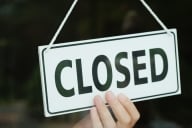You have /5 articles left.
Sign up for a free account or log in.
Of late, American higher education has been suffering more than its share of the shocks that flesh is heir to. As a result, we will likely see soon a retrenchment in government-subsidized student loans.
First, the alarm has gone out following the Federal Reserve Bank of New York’s latest study of student-loan debt. In addition to finding that student debt now exceeds $1 trillion, exceeding credit-card debt, the study found that senior citizens are bearing an ever-greater burden of student loans.
Surprised to read “senior citizens” in the same sentence as “student loans”? The study found that fully 18 percent of delinquent student-loan debt now rests on the slumping shoulders of those 50 and older. Parents increasingly are taking out loans to help their children through college. These late-life excursions into debt threaten parents’ retirement prospects, producing the “possibility of another major threat on par with the devastating home mortgage crisis,” says a recent report by the National Association of Consumer Bankruptcy Attorneys.
With this gloomy prediction, Chase, America’s largest bank, appears to agree. Chase just announced that it will stop providing student loans to those who are not its customers. Bad student-loan debt at the bank has increased 72 percent since 2009. So in a move unnervingly reminiscent of the buildup to the housing-market meltdown, Chase Bank has opted to cuts its losses.
But will those ultimately on the hook for these unpaid, government-subsidized loans -- the American taxpayers -- likewise be able to cut their losses? Not according to Vice President Joe Biden.
The vice president took part recently in a Twitter town hall, at which he was asked, "Have you ever thought about lowering education costs by decreasing the role of government intervention in the education business?" His Twittered response conceded that reducing government subsidies “could reduce [tuition] costs.”
Biden’s concession is noteworthy. Generally, defenders of these loans have been loath to admit that the resulting distortion of market forces escalates precipitously both prices and debt in the same manner and for the same reason as occurred in the home-mortgage industry.
But Biden’s extraordinary concession immediately gave way to an ordinary dodge. Even allowing that reducing government intervention could lower tuition costs, it would be “against [the] national interest to do so,” he tweeted, because fewer students would then be able to attend college, cheaper though it may become.
According to the vice president, then, the trillion dollars of loan debt, the rising defaults on these loans, and the skyrocketing tuition prices (average tuition has risen four times faster than inflation over the past quarter-century) are all worth it. They are the price for increased access to a college degree. Refusing to pay this higher price would be “against the national interest.”
Give the vice president credit for honesty. The question then becomes, “What exactly are we taxpayers getting for the increased price he wants us to continue to pay?”
According to Academically Adrift, last year’s landmark national study of collegiate learning, the answer is “not very much.” Of the national sample of students it surveyed, 45 percent failed to show “any significant improvement” in “critical thinking, complex reasoning, and writing skills (i.e., general collegiate skills)” after two years in college. Even after four years in college, 36 percent continued to show only insignificant improvement.
The disappointment produced by these results magnifies when we consider the cost of the drive for greater access. Today, about half of the students who enter college graduate. Of this half, Adrift tells us, only two out of three succeed at demonstrating some substantial learning. In all, then, only one in three college-headed students leaves with both a degree and the learning a degree is meant to certify.
For this sad outcome, Americans are footing an unsustainable debt burden. The vice president urges that we stay the course nonetheless. Will his countrymen follow him, or will they make like Chase Bank and exit before the bubble bursts? Would growing numbers begin to abandon the quest for a college degree?
This is hard to imagine when for decades we have been told, and with some truth, that a college education is the alpha and the omega. Consensus regarding the value of a degree has served to justify the upward spiral of government subsidies, tuition prices, and student-loan debt. But Chase Bank’s move is only the latest bit of evidence that, for some time now, the benefits of college are plummeting proportionately as tuition prices and loan-debt soar.
Nevertheless, Americans, at least for the short term, likely will continue to borrow for college as long as government-subsidized loans are available. But the short term may prove to be very short.
If we continue on the course urged by the vice president, loan defaults will continue to rise, which means that the bill to the federal government, which guarantees the loans, will continue to rise. The increased dollars required to foot this bill can come only through raising taxes, or cutting funding for other programs, or government borrowing. In a still-stagnant economy, raising taxes is knotty. Cutting other programs has rarely been an option for which our national leaders have shown much stomach, as it creates only a new class of aggrieved constituents. Equally problematic is increasing government borrowing when the deficit and national debt already stand at historic highs.
What seems likely, regardless of who wins the November elections, is a cutback in government-subsidized student loans. It seems that as Chase goes, so eventually must go the federal government. As the federal spigot closes, so will be the number of students able to attend college, at least initially. But the resulting downward pressure on demand will force universities to reduce prices, restoring market equilibrium in time.
How and when this will transpire is a matter for speculation, but may be explained reasonably, and not without humor, by what is known in investment circles as the “greater fool theory.” According to this theory, market bubbles are caused by overly cheery investors (“fools”) who buy overvalued products believing that they will be able to sell them at a profit to other (“greater”) fools. The bubble stays intact so long as greater fools are available to prop up the market. The bubble bursts when there are no greater fools left. At this point, the last greater fool finds that he is in fact the “greatest fool.”
Mr. Biden’s critics charge him with betting that there are still fools out there (students, parents, and taxpayers) who will continue to invest in the overvalued asset higher education has become. However, a bubble requires more than the credulousness of fools. It also requires that they be solvent. Collective foolishness has driven the country to brink of insolvency, leaving even the foolish among us with no option save self-restraint. As the maxim has it, “The wise man does at once what the fool does at last.” In higher education, the country may be poised finally to do the right thing, having exhausted all other alternatives.








